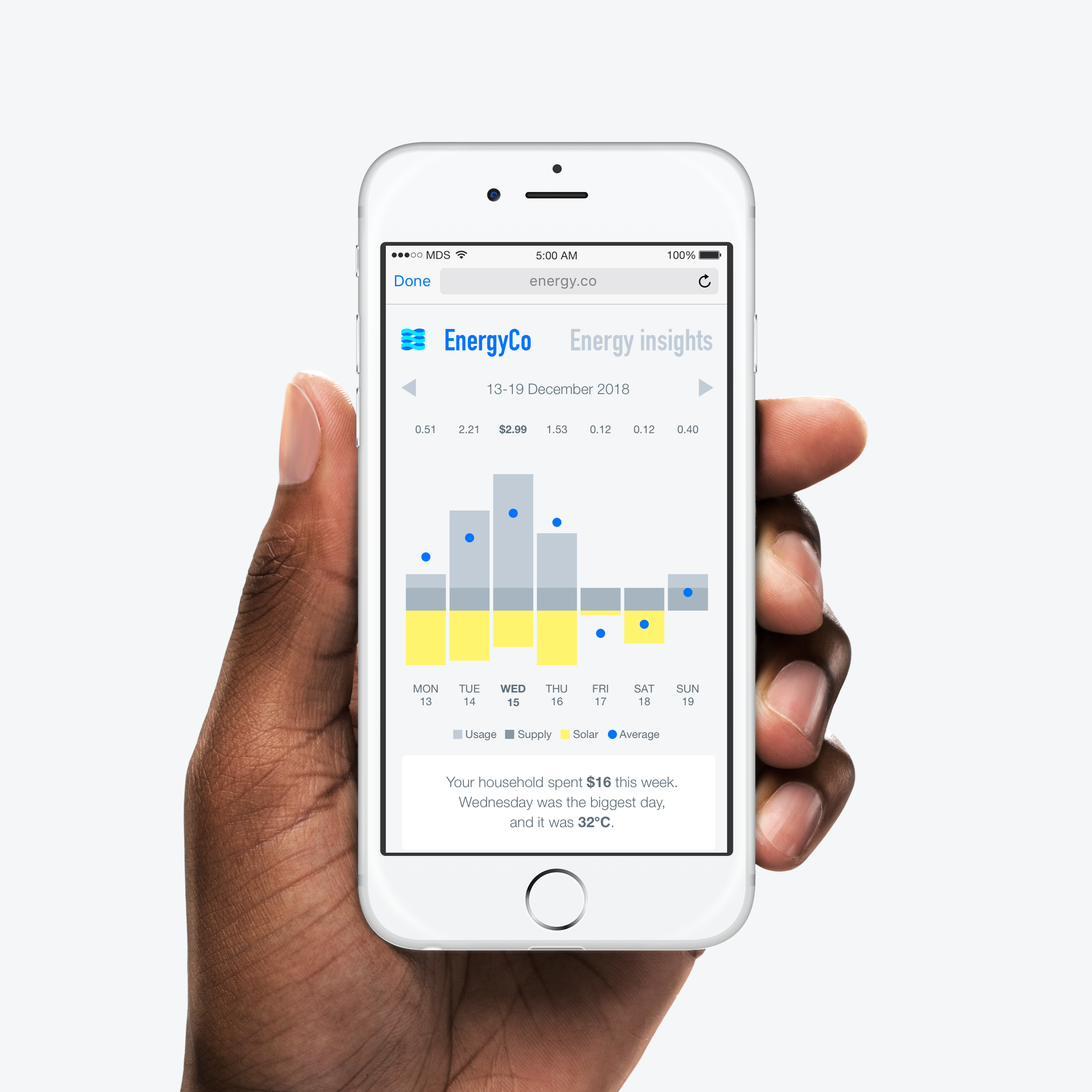Trust Case study
Trust is a customer communication toolset built on top of the Billcap software platform to provide customers with insights into data from their electricity meter.
I was first involved with this project in 2014 when it was still in its infancy. Billcap were already doing interesting things with meter data and looking to grow their offering.
Opportunity
Billcap had identified an opportunity to develop a solution to what was then, and continues to be, a significant issue for energy retailers — customer churn. With pricing increases, negative press, and massive industry changes retailers were losing customers to their competitors, and at a significant cost to both parties. I worked with Billcap to research this problem, and design a solution.
Research
It was commonly accepted that bill-shock was the major motivator to switch retailers, but our meta-analysis identified general distrust of energy retailers as the causal factor. Academic research supported our belief that customers who were shown their usage data were more trusting of their retailer.
I sought qualitative data to understand sentiment and motivations, and ran customer interviews. I found customers longed for retailers to proactively contact them with usage data, rather than the opposite: a frustrating process of discovering issues with bills and having to go through a series of call-center conversations to get answers to simple questions.
Solution
I conducted research across industries with churn problems, and other energy markets. Some retailers had been successful with mobile apps with consumption charts, but these solutions tended to be very expensive, or too technical for the average consumer.
My proposed strategy to promote customer trust was simple: we would provide them with easy to understand insights into their usage, supported by evidence in the form of simple usage charts.
My research showed email was already the highest engaged channel among Billcap’s clients, and so I proposed a cheaper, more feasible solution: energy insight emails.

Design
In consultation with Simply Energy and domain experts I developed content design and wireframes for a weekly customer email programme. The first emails I designed and developed were sent out to Simply Energy customers not long after, and were an undeniable success. A later independent study conducted by the University of Melbourne reported that we had delivered a 29% reduction in churn.
Simply customer feedback indicated they wanted historical data and more detail — to self-diagnose or validate insights. This wasn’t feasible within the limitations of email, so I designed a web UI for Simply customers. I built the web app while backend developers built an API. One innovation I’m proud of is the one-click sign in: using a hashed link in an email customers would be directed to the web portal and automatically signed in.

Growth
Two years later I returned to the Trust project. The foundational work I’d been involved in had been rolled out to more retailers and evolved into a very strong product for the company, continuing to provide value for customers, retailers and Billcap. With more retailers wanting to take advantage of Trust a team-wide project was kicked off to develop new energy insight features.
While the software team worked on a machine-learning service to identify outliers in data, a climate comparison service, and smarter data analysis tooling, I worked on turning these features into valuable insights.
I evaluated the existing insights, improved content, and designed better mobile-first emails. Additional UX improvements came from a smarter insight engine that ranked insights to push out only the most relevant to customer inboxes.

Bonus
In between all this work Simply’s web portal needed a refresh. I ran this project as a stepping-stone to a web portal Billcap could offer to all retailers. I designed new UI in-line with Simply‘s updated brand, and built it out as a Vue.js web app.
Also, lamenting about the error-prone and painful world of HTML email development process I developed a Webpack toolset to enable compliant HTML and CSS mark up.